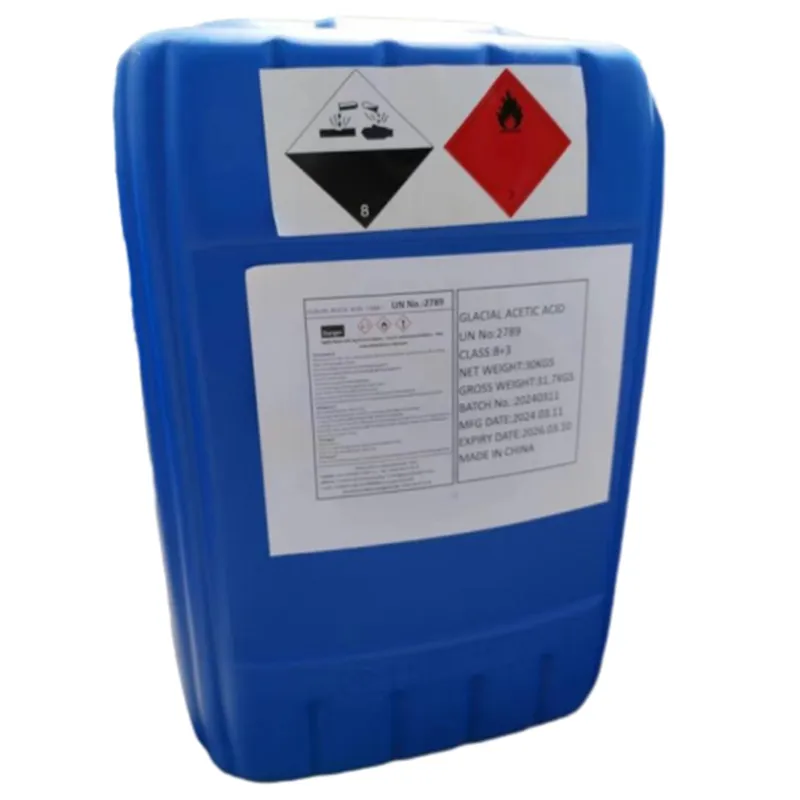
phosphoric acid acidity
Understanding Phosphoric Acid Acidity A Comprehensive Overview
Phosphoric acid, known chemically as H₃PO₄, is a versatile inorganic acid with a range of applications in various industries, including pharmaceuticals, food production, and agriculture. Its acidity and dissociation properties make it a significant compound to study, particularly in understanding its role in pH regulation, nutrient availability, and its interaction with other substances.
Properties of Phosphoric Acid
Phosphoric acid is a triprotic acid, meaning it can donate three protons (H⁺ ions) in a stepwise manner. The dissociation of phosphoric acid occurs in three stages, resulting in various phosphate species, including dihydrogen phosphate (H₂PO₄⁻), hydrogen phosphate (HPO₄²⁻), and phosphate ion (PO₄³⁻). The acidity of phosphoric acid can be analyzed through its pKa values, which are approximately 2.15, 7.20, and 12.37 for its first, second, and third dissociation constants, respectively. These values indicate that phosphoric acid is a relatively weak acid compared to strong acids like hydrochloric acid, but it is much stronger than many organic acids.
Role in pH Regulation
One of the primary applications of phosphoric acid is its use in pH regulation. In agricultural practices, phosphoric acid is often utilized to adjust the acidity of fertilizers and soil amendments. The presence of phosphoric acid can help correct nutrient imbalances in soils, facilitating the availability of essential nutrients to plants. In industries, phosphoric acid serves as a buffering agent, maintaining the pH levels in various processes—from food and beverage manufacturing to metal treatment processes.
Nutritional Significance
phosphoric acid acidity

In the food industry, phosphoric acid is commonly used as an acidity regulator, providing a tangy flavor in soft drinks and enhancing the preservation of certain food products. Its role as an acidulant not only contributes to taste but also aids in preventing microbial growth. Despite its widespread use, concerns regarding excessive consumption of phosphoric acid in soft drinks have emerged, particularly its potential link to health issues such as osteoporosis and kidney disease. This highlights the importance of understanding its acidity and overall dietary intake.
Industrial Applications
Phosphoric acid is not just a crucial component in food and agriculture; it also plays a pivotal role in various industrial applications. In the manufacturing of fertilizers, phosphoric acid is a key ingredient in the production of phosphates, which are vital for plant growth. Furthermore, it is used in the production of phosphoric esters for flame retardants and in metal finishing processes to remove rust and provide corrosion protection.
Health and Safety Considerations
While phosphoric acid is valuable for its numerous applications, it is essential to handle it with care. Concentrated phosphoric acid can be corrosive and harmful upon contact with skin or eyes. Proper safety measures, including personal protective equipment (PPE), are crucial when working with phosphoric acid. Awareness of its potential health effects and environmental impact can ensure safer usage practices.
Conclusion
In summary, phosphoric acid is a compound of great significance due to its multifaceted roles and applications across different sectors. Its acidity not only plays a vital role in pH regulation and nutrient availability but also influences various industrial processes. Understanding the properties and implications of phosphoric acid is essential for researchers, industry professionals, and consumers alike. As we continue to explore its potential and applications, a balanced approach considering both its benefits and risks will be crucial to harnessing its full potential while ensuring safety and sustainability.
-
Comprehensive Guide to Acetic Acid as Preservative: Benefits, Uses & Future TrendsNewsNov.24,2025
-
What Is a Food Additive? Global Insights, Applications & Future TrendsNewsNov.24,2025
-
968 Sweetener: The Modern Solution for Health-Conscious SweeteningNewsNov.23,2025
-
Discover the Benefits and Uses of 965 Sweetener (Erythritol) | Tenger ChemicalNewsNov.23,2025
-
961 Sweetener - A Next-Gen Sugar Alternative for Health and IndustryNewsNov.23,2025
-
Understanding 960 Sweetener: The Modern Sugar Alternative for Health and IndustryNewsNov.22,2025
-
Everything You Need to Know About 955 950 Sweeteners – Benefits, Uses, and TrendsNewsNov.22,2025
Hebei Tenger Chemical Technology Co., Ltd. focuses on the chemical industry and is committed to the export service of chemical raw materials.
-

view more DiethanolisopropanolamineIn the ever-growing field of chemical solutions, diethanolisopropanolamine (DEIPA) stands out as a versatile and important compound. Due to its unique chemical structure and properties, DEIPA is of interest to various industries including construction, personal care, and agriculture. -

view more TriisopropanolamineTriisopropanolamine (TIPA) alkanol amine substance, is a kind of alcohol amine compound with amino and alcohol hydroxyl, and because of its molecules contains both amino and hydroxyl. -

view more Tetramethyl Thiuram DisulfideTetramethyl thiuram disulfide, also known as TMTD, is a white to light-yellow powder with a distinct sulfur-like odor. It is soluble in organic solvents such as benzene, acetone, and ethyl acetate, making it highly versatile for use in different formulations. TMTD is known for its excellent vulcanization acceleration properties, which makes it a key ingredient in the production of rubber products. Additionally, it acts as an effective fungicide and bactericide, making it valuable in agricultural applications. Its high purity and stability ensure consistent performance, making it a preferred choice for manufacturers across various industries.





